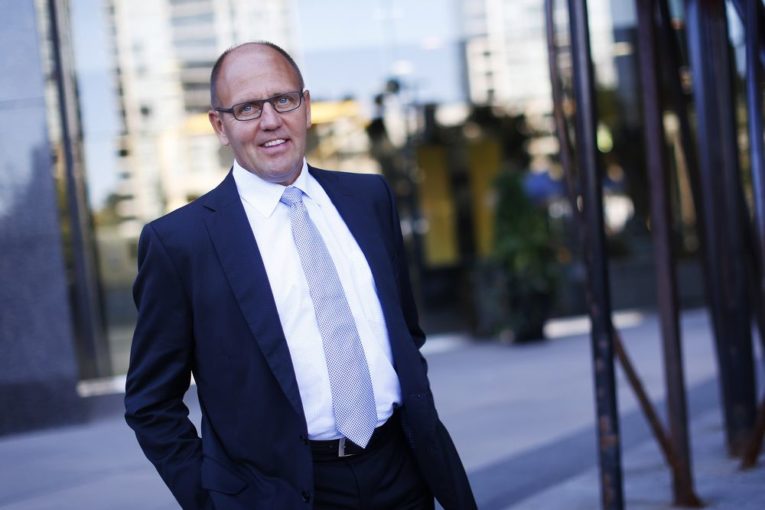
There’s a party going on as global crude prices rebound this year, yet Canada’s oilpatch is still waiting for the music to start.
As Stampede winds down and the second half of 2018 gears up, the country’s oil and natural gas industry is receiving a series of contradictory messages.
Conditions are generally improving — from stronger oil prices to progress on building much-needed pipelines — but it could also be a whole lot better.
“It’s boom time in Denver. It’s boom time in Houston. I’ve never seen it that busy,” said Ian Nieboer, a director with RS Energy Group, a Calgary-based data and research firm.
“Calgary doesn’t feel that way today. But we have good assets … and we have to keep grinding it out.”
Mixed signals and plenty of volatility face Alberta’s energy sector.
Oil markets have whipsawed in recent weeks because of geopolitical issues, production outages and rising demand. West Texas Intermediate crude topped US$75 a barrel earlier this month, plunged almost $4 Wednesday amid rising global trade tensions, and closed Thursday at $70.33.
Prices are up sharply this year and the relatively low value of the Canadian buck has vastly improved the economics for oil producers.
Analysts believe there’s more upside ahead, particularly because of declining output from Venezuela, the expected impact of U.S. sanctions on Iranian oil exports and questions surrounding spare production capacity within OPEC.
“The market is itching to take the price to $100. I think it could go well over $100,” Peter Tertzakian, executive director of the ARC Energy Research Institute, told a conference in Calgary this week.
“I don’t think that’s a good thing for our business, nor is it long-term sustainable. It’s just a recipe for it to come down again.”
Such a spike would slow global economic growth and crimp demand, although in the short term, cash flow levels for petroleum producers would rise.
At the TD Securities energy conference, CEOs with intermediate-sized producers seemed reluctant to consider opening the spending taps later this year, planning instead to deleverage balance sheets, look for strategic mergers and acquisitions, or return money to investors.
While economics are robust today, spending isn’t keeping pace with oil prices and bigger capital programs likely won’t occur until 2019 or 2020, predicted Grant Fagerheim, chief executive of Whitecap Resources.
“I think there is caution,” he said after the event.
“Canadian energy producers on the oil side are conservative by nature and we’ll walk our capital programs up, versus getting very aggressive, because we do want some time to handle it.”
Data from energy consultancy Wood Mackenzie indicates total spending by the Canadian oil and gas sector is still expected to dip by US$2.6 billion this year to $25 billion.
South of the border, however, capital spending is projected to rise by $11 billion, to $87 billion.
Weak natural gas prices in Western Canada are also tempering enthusiasm, with some producers shutting in production earlier this year.
“Right now, we will be disciplined how we go about (spending). Oil prices are better, but gas prices, natural gas prices, are pretty darn flat,” said Steve Laut, executive vice-chairman of the country’s largest producer, Canadian Natural Resources.
“So you’ve got to take a balanced view.”
Others are more bullish the needle is finally pointed in the right direction after several years of cost-cutting.
If the oil price rally continues through the year, the benefits will start showing up in financial results with bigger profits.
“People are really going to evaluate what they’re looking at and think this is a great opportunity to add new light oil barrels,” added Andrew Phillips, CEO of PrairieSky Royalty.
“I do think we’ll see rigs increase in the field in the back half of the year.”
Drilling activity is starting to pick up.
In June, the number of active rigs in Alberta averaged 106, up 21 per cent over the same period a year earlier, according to provincial figures.
Obsidian Energy increased its capital spending plan earlier this year by $50 million to $185 million and CEO David French expects a similar or larger program next year as light oil prices improve and existing financial hedges come off.
“The mood is turning,” he said.
“I think (with) the return to land activity and land sales, you are seeing early indicators. Now, would I say it’s a wild gold rush? No.
“But would I say it’s a return to a more modest and measured pace of development that feels better than the last several years? Absolutely.”
For every positive factor, there is a counterweight.
There are signs the first major liquefied natural gas project off the country’s west coast — the $40-billion LNG Canada development — will move ahead.
However, transportation bottlenecks continue to crimp returns for companies, forcing more product to move by rail and causing a wider price discount for Western Canadian heavy oil.
Yet, progress is being made on improving transportation infrastructure.
The federal government is buying the Trans Mountain pipeline project and planning to push ahead on construction. Enbridge’s Line 3 replacement project won approval in Minnesota recently, while TransCanada continues to make plans for Keystone XL, although it has yet to make a final investment decision.
“I think we’ve almost turned the corner,” Laut said of the pipeline issue. “We think there will be lots of market access.”
Others are less certain. Oilsands producers cite regulatory delays and competitiveness issues as additional factors getting in the way of major new projects.
Ultimately, it doesn’t feel like the party for the Canadian oilpatch is about to start — at least not quite yet.
“We have assets to have boom times,” said Nieboer.
“When you believe that the differentials our products face — whether it be heavy oil or Canadian gas — are solved, then you can point to a boom time.”
Chris Varcoe is a Calgary Herald columnist.
You can read more of the news on source
